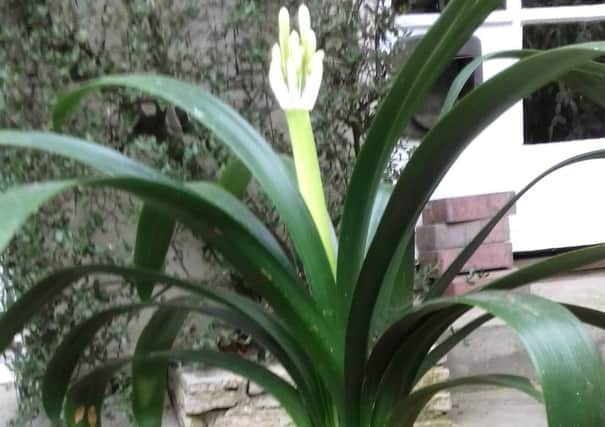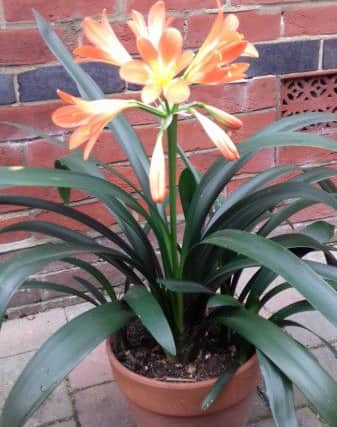BRIAN KIDD: Your gardening letters and jobs for the week ahead


Q: Dear Brian, A story and a question.
The Story.
Back in the early 1970s I was doing a lot of overseas travel and my young wife was responsible for the garden, about which she knew virtually nothing.


At the time I believe you had a senior position in Portsmouth City Council’s Parks Dept and my wife was in the habit of telephoning you to seek advice on horticultural matters.
Advertisement
Hide AdAdvertisement
Hide AdI thought this was a real impertinence but she assured me you were always kind, patient and helpful.
You became her guru and during the years that followed we would try never to miss your appearances on radio and TV.
I am now 80 and my wife of 75 sadly now has dementia, so for the first time in my life the care of our flower garden falls to me.


I am on a steep learning curve and every week I read your article in the Weekend supplement of The News since I know your advice always to be simple, succinct and unambiguous.
Advertisement
Hide AdAdvertisement
Hide AdI have kept most of these articles for reference purposes and I would like to take this opportunity of thanking you for all the help you gave my wife and for all the fulfilment and joy that you have given us by helping us to explore and appreciate the wonderful world of horticulture.
The Question.
I attach two pictures (one in bud, one in flower) of a plant that I have grown in recent years thinking it was an amaryllis and I have religiously followed your advice on the subject.
However, last year I separated it only to find that it has no bulb, just a mass of white roots about the thickness of a pencil. So I guess it is not an amaryllis. Could you possibly tell me what it is please?
With best wishes,
Yours sincerely,
John Stainer
A: What a wonderful message and I am so pleased I was able to help your wife. Your e-mail made my day.
Advertisement
Hide AdAdvertisement
Hide AdThe plant is in fact a clivia, one of the most beautiful pot plants ever and it will have orange flowers very soon.
They are easy to look after. They like to be kept in the same sized pot and will thrive if fed with Maxicrop for Tomatoes once a month from April until September.
Start feeding again the following year from April to September.
Very best wishes John, you made my day. Brian
Q: I grew hostas in large containers last year to prevent slug damage, but they still got in. How can I stop slugs climbing the sides of the pots? CR, Rowlands Castle.
Advertisement
Hide AdAdvertisement
Hide AdA: Buy copper tape (it’s in stock at Keydell). It is less than £4 for a box of four metres. Fix a band around the centre of each container so the ‘sawn’ edge faces the ground. Good to use on top of wood surrounding raised beds too.
Q: My blueberry plants’ foliage is pale and the tips of the branches are almost yellow. How do I get them greener? MR, Cowplain.
A: Blueberries need acid soil. The yellowing is because of chalk. Water with Maxicrop with added iron. Another idea is to buy sulphur dust. Apply a quarter of an inch over the soil under the berries’ canopy and fork it in. Sulphur makes the soil acid and Maxicrop will feed the soil.
Q: We have just moved to Denmead and there is a camellia 12ft tall and 30ft round and while it is magnificent it is far too large. Could we prune it and when please? D and P, Denmead.
Advertisement
Hide AdAdvertisement
Hide AdA: Prune it as hard as you wish as soon as it finishes blooming. You could actually cut off a lot of the side branches so it has a trunk and will grow as an evergreen tree.
A brilliant tree which will flower next year if it is pruned now.
Q: I want to grow gladiolas so they flower in the autumn. You may think this is an odd idea but we need flowers with spikes in early October. Sally, Cosham.
A: Plant them in the first week in June for flowers in the first week in October and a week later for mid-October. Good luck with your flower exhibition.
TASKS FOR THE COMING WEEK
Advertisement
Hide AdAdvertisement
Hide Ad•Fork over areas in the garden where summer flowers are intended. Scatter over 2-3oz of Vitax Q4 fertiliser to each square yard and lightly rake into the soil. The fertiliser will be active once the plants are planted after mid-May.
•If you notice worms lying on paths, they have tried to find water and can’t get back into the soil. Pick them up and put them underneath the soil. Once out of the ground, they can’t get back. Thanks.
•Love spring greens? Try sowing seeds of the summer cabbage called Duncan. It’s an F1 hybrid and the leaves are green while the plants are young. Sow single seeds in insert cells. Plant out once large enough to handle and eat the greens in 12 weeks’ time. They can be sown like this every four weeks until August.
•Sow marrow and courgette seeds indoors.
•Continue to cover emerging shoots on potatoes and use the compost and potash as suggested last week to prevent slug damage. Scatter slug crystals in between the rows, these crystals will not harm birds. It only kills slugs by dehydrating them.
Advertisement
Hide AdAdvertisement
Hide Ad•Give early potato plants half a gallon of water to each plant, applied slowly. If the haulms look thin and weak, add a dessertspoon of sulphate of ammonia to the water but don’t allow the mix to touch the leaves.
•Look at roses to check for greenfly. A quick squeeze here and there where groups of aphids are seen may keep them under control, but a spray of Multirose will be even more effective.
•Support broad bean plants. A very good way of doing this is to insert 4ft canes upright every 4ft among both sides of the row and then tie in horizontal canes, a bit like a fence, the horizontal canes being 4in above the other. This is a good wind-resistant method and especially good on exposed sites where high winds often break the plants when they are laden with bean pods.
• French beans, either the dwarf varieties or climbing types can be planted directly into the ground. Dwarf beans are best planted 8in apart in double rows 12in between rows. There are usually quite a few ‘misses’ so sow a few extra seeds at the ends of the rows and these can be used to fill gaps. Scatter slug crystals because slugs and snails eat germinating beans as if there’s no tomorrow.
Got a question for Brian? Click here to ask it.